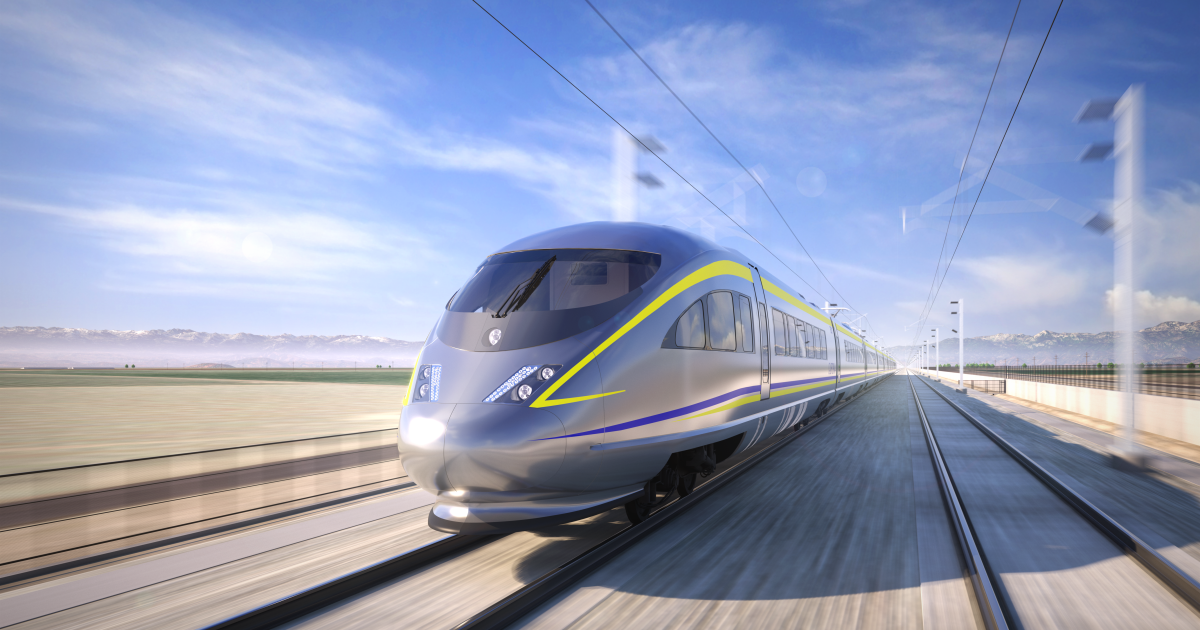California’s high-speed rail project has been heavily scrutinized in recent months for its long delays and rising budget. In its decision to pull federal funding from the project, the Trump administration blamed state leadership and the high-speed rail authority.
A new report from a San Diego nonprofit points to third-party permitting requirements as another culprit to the project’s long delays, and a reason for the slowdown on transit projects across the state.
The report from the Circulate San Diego suggests that requirements first imposed decades ago to stop infrastructure projects from ripping up neighborhoods have created new hurdles that have put innovations around transportation years behind schedule.
“The policies meant to restrict highways from separating communities, are now preventing the construction of public transit, meant to stitch communities together,” Colin Parent, the chief executive and general council of Circulate San Diego, wrote in “The Powerless Brokers: Why California Can’t Build Transit.” The report was released Monday.
The delays in transit projects aren’t isolated to California, Parent said. But because the state’s high-speed rail train is one of the most ambitious and widely criticized projects in the nation, the consequences of delays are staggering here.
Multiple jurisdictions are often required to sign off on a project, outside of the leading transit agency. In the case of high-speed rail, Parent describes disputes that have occurred between the authority and city officials that have prolonged the timeline for construction. In Wasco, for example, disagreements between the city and the authority over the creation of an underpass and other projects led to years-long delays on construction and increased costs.
“I think a lot of people assume that when you’re building transit, the transit agency decides what projects they want to build, they get funding, they do an environmental review, and then they’re ready to go and to build things. And that’s just not how it works,” Parent told The Times.
“They have to go through a whole new series of processes to receive permits and other agreements in order to actually build the projects that they’ve approved, and those additional sets of processes can create all sorts of delays, additional costs and other challenges to building the projects that policymakers say that we want to do.”
Environmental reviews can take time, as can trying to gain public support.
Not every city or county faces the same challenges when it comes to coordination on projects. The Los Angeles and Bay Area area regions each include 27 separate transit operators, Parent said. In the San Diego region, there are only two.
In Los Angeles, Metro often has to coordinate with the Los Angeles Department of Transportation, Bureau of Engineering and Street Services. In the report, Parent highlighted the transit agency’s extension project underneath Wilshire Boulevard for the D Line, formerly known as the Purple Line. The project saw broad support from city officials, but faced initial permitting challenges over demands by DWP and the Bureau of Engineering.
In the early and middle 20th century, U.S. cities’ infrastructure projects went unchecked, leading to the destruction of communities that largely displaced disadvantaged and working class residents. Perhaps no one represents the era better than the late urban planner Robert Moses, who shaped the New York City skyline and whose highway and bridge projects razed city blocks and neighborhoods. From his multiple appointed positions in state and local government, he was one of the most powerful and divisive figures in the state from the 1920s to the 1960s.
In an effort to decentralize that kind of power with a system of checks and balances, community advocates pushed for laws to establish environmental standards and regulate project approval so that affected communities could be represented in decision-making. While no one has pushed for a return to the days of someone like Moses, Parent and state lawmakers in California believe that today’s requirements have created new obstacles.
“A lot of the rules related to permitting that have gotten in the way of building infrastructure, including public transit, have really expanded since the 70s,” Parent said Monday. “There’s been this multi-decade growth in the kinds of barriers and hoops that applicants and public agencies have to jump through in order to get projects.”
So, what’s the solution? Because the delays in transit projects play out throughout the U.S., Parent believes standards in Quebec and Ontario could present a better model. There, transit agencies are allowed to self-permit if outside parties do not meet specific timeline requirements when it comes to permitting.
“Those local governments are under a timeline, and if they don’t review and approve or deny those permits within a period of time, then the transit agency gets to self permit,” Parent said.
State Sen. Scott Weiner (D-San Francisco) introduced a bill this year that takes a similar approach. With focus on high-speed rail, the bill would implement time limits on third-party’s approvals and denial process.
During a recent state assembly hearing, Wiener said that “any city or water district or special district where some sort of encroachment permit is required” can slow down a project’s process by simply doing nothing.
“They can just not respond or drag their feet — sometimes for good reason … sometimes for not good reasons — and there is nothing that, in this case, high speed rail, can do about it,” he said.
This story originally appeared on LA Times

